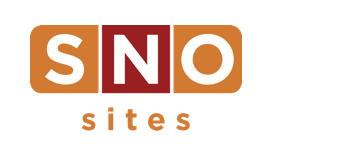More tips and advice from SNO advisers
We’re back with more tips, advice, and wisdom from our excellent network of SNO advisers! (And if you missed our first round earlier this week, be sure to go back and read it).
Today, we hear from three additional advisers about how they’ve managed to cultivate successful student media programs at their respective schools. Check out what they had to share below!
Sara Whittaker
Whittaker’s full-time gig is student journalism. She teaches two sections of Foundations of Journalism plus one section each of News Lab, Yearbook Lab, and Broadcast Lab. Whittaker mentioned that in her 23 years advising – all at Iowa City West High School in Iowa – she has been grateful to watch her program evolve and grow.
SNO Website: West Side Story
Q: What would you say is the “secret to success” in running a student journalism program?
A: I’m not sure if there’s a true “secret,” but what works for me is trusting my students to take ownership of their publications while focusing my energy on listening to and responding to their needs. I also emphasize creating organized systems and structures — for example, clear processes for checking out equipment, arranging interviews, sharing story and design drafts, and scheduling editorial meetings. This way, editors don’t get bogged down by logistics and can instead dedicate their time and energy to elevating the quality of the publication’s content.
Q: What advice would you give to a brand new adviser?
A: Get involved! Attend state or national conventions, enter contests, invite professional journalists into your classroom, and do whatever you can to promote your program in your community. Even if only a few students participate or place in contests, celebrate those wins enthusiastically. Building excitement inspires students, empowers them, and brings positive attention to your program, which helps it grow and thrive.
Q: What’s your favorite SNO feature?
A: I like all of the template options, especially the Immersive Photo Long-form format. I also like how SNO has now built-in infographics, and the map and timeline feature. Also, I can’t shout out SNO Support enough. Any tech question my students or I have has always been answered in a very timely manner.
Brian Sweeney
Sweeney has been advising for fourteen years and currently teaches both an Introduction to Journalism elective and an Advanced Journalism election at Townsend Harris High School in New York. Sweeney also teaches two sections of sophomore English with what he calls a “journalistic flair.”
SNO Websites: The Classic & The Critic
Q: What would you say is the “secret to success” in running a student journalism program?
A: In many ways, this job is extraordinarily serious and important. You have to be willing to defend students’ first amendment rights, and while that is not a constant job, when it’s time to do it, you have to be ready for it. Most of the time, however, I think the secret to success is having fun. Our student journalists have been called “fiercely independent,” but most of the time, we just have a lot of fun coming up with new ideas and executing them. We go on trips, have custom coffee mugs, and have a “home base” in the school that is a beloved space. Making time to have fun as a team motivates students to commit and leads them to do great things.
Q: What advice would you give to a brand new adviser?
A: Your newspaper is not a newsletter, but remember that the paper does serve the purpose of shining a spotlight on community achievements and activities. You will be able to handle covering the more difficult topics later if you first make the paper essential to the school (by showing that you can cover key events and achievements). Introduce new teachers to the community, highlight the contributions of unsung heroes, cover every sport. These are all fairly simple, necessary things that can be done quickly and well. Train the team to do these things by throwing them into it. If you spend too much time teaching them the basics so that they only start reporting and publishing many months in, they’ll be less prepared. They learn by doing, so guide them through that process with simple, necessary topics as soon as possible. When they are good at those things, they will be ready (and will have earned credibility) for the more challenging topics as they arise.
Q: What’s your favorite SNO feature?
A: As someone who maintained a website without SNO before we signed on with SNO, I can say that the best feature is having a company you can rely on to maintain the site with ease and not have to worry about speed, performance, and security. The customer service is second to none — and I don’t mean in the “school journalism website business,” I mean in general. Every question I ask or issue that comes up gets handled immediately, and the team doesn’t stop until we let them know everything is resolved. SNO really takes care of everything, which gives us time to come up with new ideas. The customizable layout system is also really excellent; it allows you to maintain a consistent design while continually adding new elements. I also love the Badges system; it pushes our staff to up their game each year. When our students are accepted by the Best of SNO judges, we let the whole staff know and celebrate it as a major achievement (because it is quite selective!). We love the idea of our content reaching a wider audience.
Kamilah Lawson
Lawson’s student-journalism specific courses include two sections of Journalism 1 and one section of Journalism 2, which publishes the school newspaper. While she currently teaches at Alexandria City High School in Virginia, her 16 years of advising experience have included three different high schools.
SNO Website: Theogony
Q: What would you say is the “secret to success” in running a student journalism program?
A: Transparency, Patience, and Consistency with the students.
Q: What advice would you give to a brand new adviser?
A: Learn the journalism laws for your state and know your school’s publication policies first. Then have fun, build community.
Q: What’s your favorite SNO feature?
A: The Dashboard has a plethora of tools and resources for your site and I like that I can reach out with a question and get quick responses/feedback.

